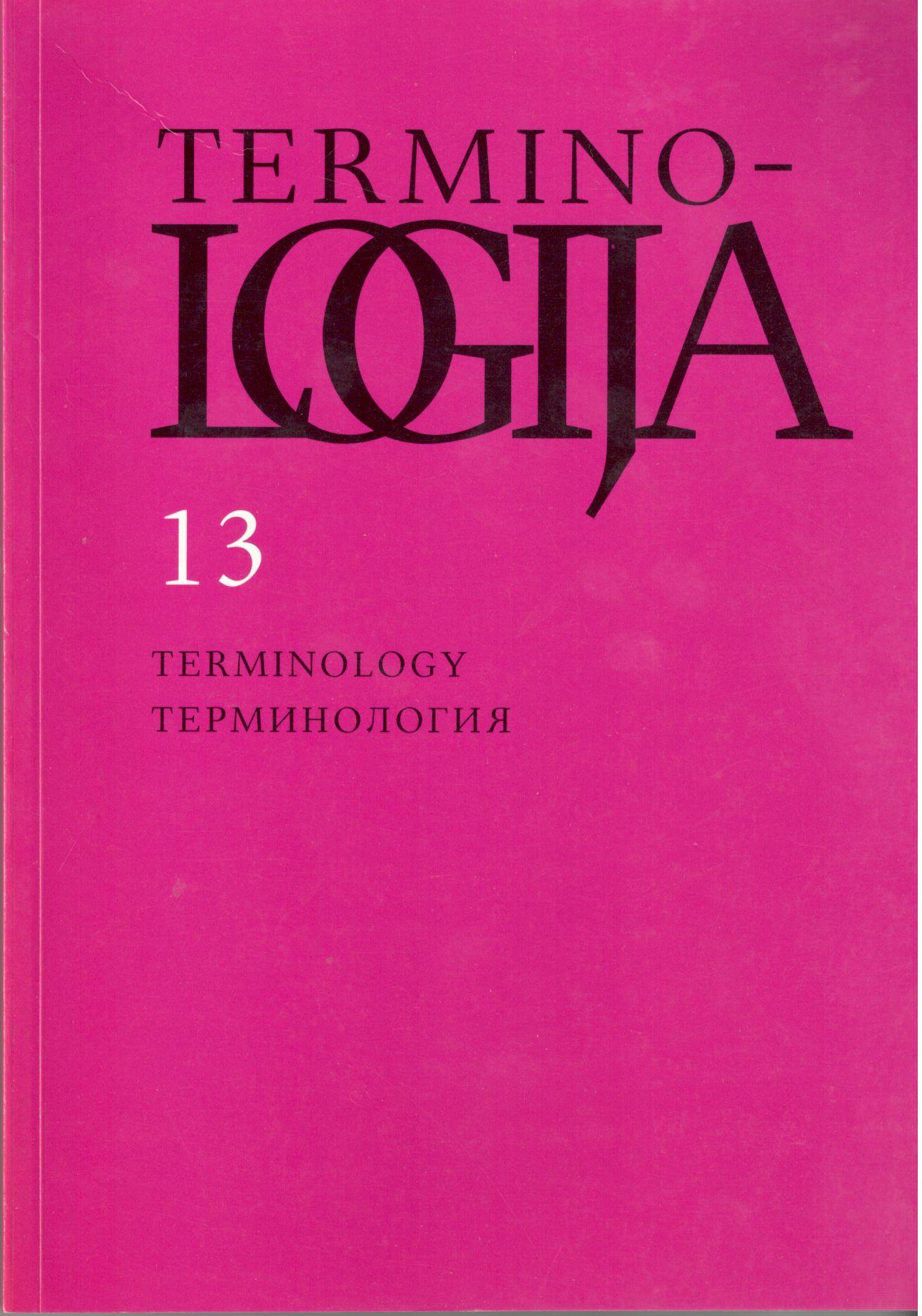Literatūros mokslo terminų antonimija 1922–1942
Antonymy of literary terms in 1922-1942
Author(s): Asta MitkevičienėSubject(s): Language and Literature Studies, Lexis, Semantics, Descriptive linguistics, Baltic Languages, Philology
Published by: Lietuvių Kalbos Institutas
Keywords: term; antonym; literary terminology
Summary/Abstract: The article deals with the antonymic terms which were extracted from important works on the theory of literature and history of universal literature published in 1922–1942. That period is an important stage of the development of present-day Lithuanian terminology of literary science. The sources of the article are following: Literatūros teorija (The Theory of Literature) (1922) by K. Bizauskas, Stilistika (Stylistics) (1927) by M. Gustaitis, Literatūros teorija (The Theory of Literature) (1930) by J. Norkus, Įvadas į bendrąją literatūrą (An Introduction to Universal Literature) (1923) and Literatūros įvadas (An Introduction to Literature) (1931) by V. Dubas, Visuotinė literatūra (Universal Literature) (1942, 2 volumes) by J. Ambrazevičius, J. Grinius, A. Vaičiulaitis. Not only “real” literary terms (tragedija ‘tragedy‘ – komedija ‘comedy’) are antonymous, but also general terms of science and art (indukcija ‘induction’ – dedukcija ‘deduction’; realus fonas ‘realistic background’ – fantastinis fonas ‘fantastic background’) and some terms of related subject fields such as linguistics (ilgas skiemuo ‘long syllable’ – trumpas skiemuo ‘short syllable’), aesthetics (grožybė ‘beauty’ – biaurybė ‘nasty’) etc which make the integral part of literary science. In respect of meaning, antonymic literary terms belong to different groups of terms, for instance, names of features, names of the means of expression, names of the elements of text, names of the parts of writings, names of actions etc.According to expression, antonymic literary terms are either conjugate terms (derivational antonyms) (eiliuotinis epas ‘poetical epos’ – neeiliuotinis epas ‘non-poetical epos’) or non-conjugate ones (lexical antonyms) (turinys ‘content’ – forma ‘form’). Antonyms (as well as antonymic terms with opposite elements) are of the similar origin (Lithuanian or foreign) or even of the mixed origin. Terms with Lithuanian opposite elements apparently dominate in the group of derivational antonyms. Therefore the foundations of antonymy of terms are dichotomy principle and binary concepts, investigated antonymic terms more frequently are connected by contradictory opposite (originalas ‘original’ – vertimas ‘translation’) than contrary opposite (užuomazga ‘entanglement’ – atomazga ‘denouement’), vector (directional) opposite (veiksmo kilimas ‘rise of action’ – veiksmo slūgimas ‘fall of action’) or converse opposite (klausimas ‘question’ – atsakymas ‘answer’).Terminology of literary science of the investigated textbooks has not only its own antonyms (such as poezija ‘poetry’ – proza ‘prose’), which have got into common (non-terminological) usage, but also antonyms opposition of which is related with particular antonymy of general lexis (tikrovė ‘reality’ – prasimanymas ‘fiction’). Antonymy of some complex terms is based on antonymy of one-word terms (or their relatives) (compare: poezija – proza → poezijos veikalas ‘poetic work (writing) ’ – prozos veikalas ‘prosaic work (writing) ’), sometimes opposite lies with antonymy of general lexis (gerasis veikėjas ‘positive personage’ – blogasis veikėjas ‘negative personage’). Attention should be drawn to the fact that terms which had been created with antonyms of general lexis may not always be considered as antonyms (compare vyriškas ‘masculine’ – moteriškas ‘feminine’ and vyriškas rimas ‘masculine rhyme’ – moteriškas rimas ‘feminine rhyme’).Amongst investigated antonyms complex terms make up the largest group and complex antonyms with antonymic subordinate elements are more numerous than antonyms with antonymic main elements. This may be caused mostly by a non-linguistic factor – particular system of concepts.Some groups of pairs of antonyms are visible in the investigated material. Those groups consist of key (basic) literary antonyms and terms related with them, for example: poezija ‘poetry’ – proza ‘prose’, poezijos x – prozos x, poetinis x – prozinis x, poetiškas x – proziškas x (‘poetic’ x – ‘prosaic’ x); tragedija ‘tragedy’ – komedija ‘comedy’, tragizmas ‘tragedy’ – komizmas ‘comicality’, traginis x – kominis x, tragiškas x – komiškas x (‘tragic’ x – ‘comic’ x) etc.Significant changes of antonymy of literary terms during investigated 20 years period haven’t been noticed. Surely, over time one or another variant or synonym of antonymic term was chosen or opposite concepts were named by the whole other pair of antonymic terms. However the antonymy itself is constant semantic relation.
Journal: Terminologija
- Issue Year: 2006
- Issue No: 13
- Page Range: 134-148
- Page Count: 15
- Language: Lithuanian

